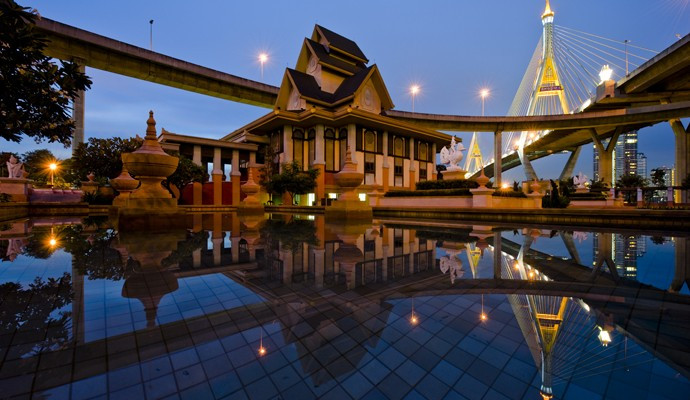Thailand: Bangkok to be the New Atlantis?

According to experts, day after day, Bangkok sinks, with the most pessimistic saying part of Thailand's capital could be submerged by 2030, Le Monde has reported.
Specialists have also warned that special preventive policies should be implemented as in the case the natural disaster does take place, thousands of lives could be at stake.
A mix of factors including climate change, rising sea level and coastal erosion could lead to the disappearance of the biggest city of the Chao Praya river delta, originally built up after a commitment on April 21, 1782 by the first sovereign of the Chakri dynasty, a family which still reigns today.
Meanwhile figures show that the city continues to multiply demographically, as it has now reached up to 10 million inhabitants.
Specialists warn that even the weight of the skyscrapers contributes to the progressive engulfing of Bangkok as under their pressure, the soils descend from 1.5 to 5.3 cm each year, while a big part of the megalopolis is already under sea level.
The experts affirm that the rising sea level will threaten more that 1 million buildings, 90% of which are residential. In the Samunt Prakan harbor, about 15 kilometres away from Bangkok, the suburban houses along the river are already flooded certain months of the year.
They also point out to a report published by the World Bank, the Asian Development Bank and the Japan International Cooperation Agency, in which Bangkok appears on the list of the cities threatened by climate change.
Jan Bojo, a World Bank expert in the Thai capital, says one of the reasons Bangkok is sinking is the abusive pumping of ground waters.
While most experts agree that on the need to address the situation, many diverge on the extent and causes that leads the city to sink a little bit more evry day.
Smith Dharmasaroja, head of the National Center for the Prevention of Natural Disasters, told Le Monde newspaper that in 2100, Bangkok will have become a new "Atlantis."
Mr Dharmasaroja claims that the government "has taken no decision yet" to stop the phenomenon. "If nothing is done, Bangkok could be entirely flooded by 2030." One solution he proposed consists in building a huge series of sea walls along the Siam gulf, a project that would cost about 2 billion euros.
Anond Snidyongs, an oceanographer specialized in the impact of climate change in Southeast Asia, is however more cautious. He says that: "no one can predict how long it will take for Bangkok to be flooded and how the process will evolve."
Opposing Dharmasaroja's project, Snidyongs says the construction of sea walls would be useless. "It is no use trying to prevent coastal erosion from happening. The shore diminishes 3 to 4 cm each year: it's hopeless," he said, before adding that "On the other hand, there are many other ways to fight the floods, like, for example, better management of urban building land."
Niramon Kulsrisombat a town planner and teacher at the architecture department of the University of Chulalongkorn said that "floods have always been a natural phenomenon considering that Bangkok is built on muddy soils, only 1.5 meters above sea level."
She however pointed out that while before, many "khlongs" (irrigation canals), vegetable gardens and fields absorbed the floods, many buildings have been built on lands that used to allow the water to drain during the urbanisation process.
© Copyright IBTimes 2025. All rights reserved.



















